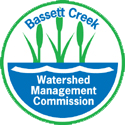News
GreenCorps Fight to Keep Salt Out of Minnesota Lakes
Thu, Jan 10, 2019Salty water is a growing problem in Minnesota that affects aquatic life and our drinking water. You might not realize that your use of a water softener or sidewalk salt contributes to a build-up of chlorides in our shared waterways. Fortunately, a new generation of Minnesota GreenCorps is hard at work raising awareness of chloride issues around the state.
Minnesota GreenCorps is a state-wide program coordinated by the Minnesota Pollution Control Agency dedicated to training a new generation of environmental professionals. GreenCorps members tackle many pollution issues, including the growing crisis of excess salt in local lakes and streams. If salting continues at the current rate, local waterways may no longer support fish or plant life as soon as 2050.
Water softeners are a big culprit
“People are surprised and shocked when they learn that water softening is affecting lakes and rivers,” says Kate Johnson, a GreenCorps member in the City of Rogers. Most people don’t know that, once water is polluted with salt, there’s no simple or affordable way for wastewater plants to remove the chloride.
“This is a public education issue,” according to Jaron Cook, a GreenCorps member with the Anoka Conservation District. Excess water softening in Anoka County is seeping through home septic systems and into the groundwater. Jaron is encouraging Anoka homeowners to update their water softeners to more efficient models or to calibrate their softeners to use less salt.

Further west, the City of Morris faces a unique challenge when it comes to water softening because their groundwater is among the hardest in the state. GreenCorps member Ben Erickson is focused on outreach in anticipation of the installation of a new water treatment plant. This central treatment system will soften all of the city’s water, eliminating the need for home softening and minimizing the risk of excess softening.
Regardless of where you live, Ben encourages homeowners to have their water softeners calibrated annually. “Home water softening is one of the biggest issues when it comes to our chloride problem, and it is the easiest thing to fix,” he says.
Efficient road salting protects aquatic life
In Mille Lacs County, GreenCorps member Ben Lehman will spend this winter auditing the public works department’s use of road salt. Salt and sand used over the course of the winter wash down storm drains, damaging the waterways Minnesotans know and love.
Excess salt in rivers and streams stresses aquatic life, and replacing road salt with sand has its own drawbacks. Cloudy, sandy water can scratch the gills of fish when they breathe, and the excessive sandy sediment fills lakes. “Lakes naturally take several thousand years to fill with sediment,” says Ben. “With current sand use rates, it could take as little as two hundred years.”
Lake-friendly winter maintenance
“There’s no salt on the market that isn’t harmful to the environment,” says Kate. While public works continues to refine their road salt formula, homeowners can replace sidewalk salt environmentally friendly alternatives today.

Next time a winter storm hits, grab your shovel. The best approach to keeping your sidewalks and driveway ice-free is to shovel early and often. Instead of salt or sand, choose water-friendly solutions that work better like chicken grit—crushed granite sold at most feed stores. It provides excellent traction on ice and is easy to sweep up and re-use. Some amount of snow and ice on driveways may be safe and acceptable.
If you decide to purchase sidewalk salt, don’t be fooled by deicers marketed as “non-chloride,” which are no better for the environment. Keep an eye on the practical melting temperature in order to salt properly. Most sidewalk salt works at 15 degrees Fahrenheit or warmer. When the weather is too cold for salt, use sand, kitty litter, or chicken grit for traction.
Limit the use of salt and de-icers to walkways, and use as little as possible. Scatter salt with two inches between each granule. A 12-ounce cup of salt will cover 10 sidewalk squares or a 20-foot driveway. Once the sidewalks are clear, sweep up excess salt and reuse it.

If you hire a company to remove snow, check out the Minnesota Pollution Control Agency list of contractors who have completed the Smart Salting training.
Calibrating your water softener and minimizing your use of sidewalk salt are two simple steps that make a big difference. Next time you reach for the sidewalk salt, remember: it only takes one teaspoon of salt to pollute five gallons of water.
Using salt wisely
- Shovel. Clear walkways before snow turns to ice, and before you apply salt. The more snow you clear manually, the less salt you’ll need.
- Select. Salt doesn’t melt ice if the pavement is below 15 degrees, so use sand for traction when it’s too cold, or choose a different de-icer.
- Scatter. Use salt only where it’s critical. When you apply salt to pavement, leave plenty of space between granules. A 12-ounce coffee cup of salt is enough to cover 10 sidewalk squares or a 20-foot driveway.

- Sweep. Clean up leftover salt, sand, and de-icer to save and reuse as needed.
How much salt do you need?
A 12 oz. mug is enough salt for 10 sidewalk squares or a 20’ driveway. 1 to 2 inches between particles is usually enough!


Salt tipcard
Tips for smart salting

